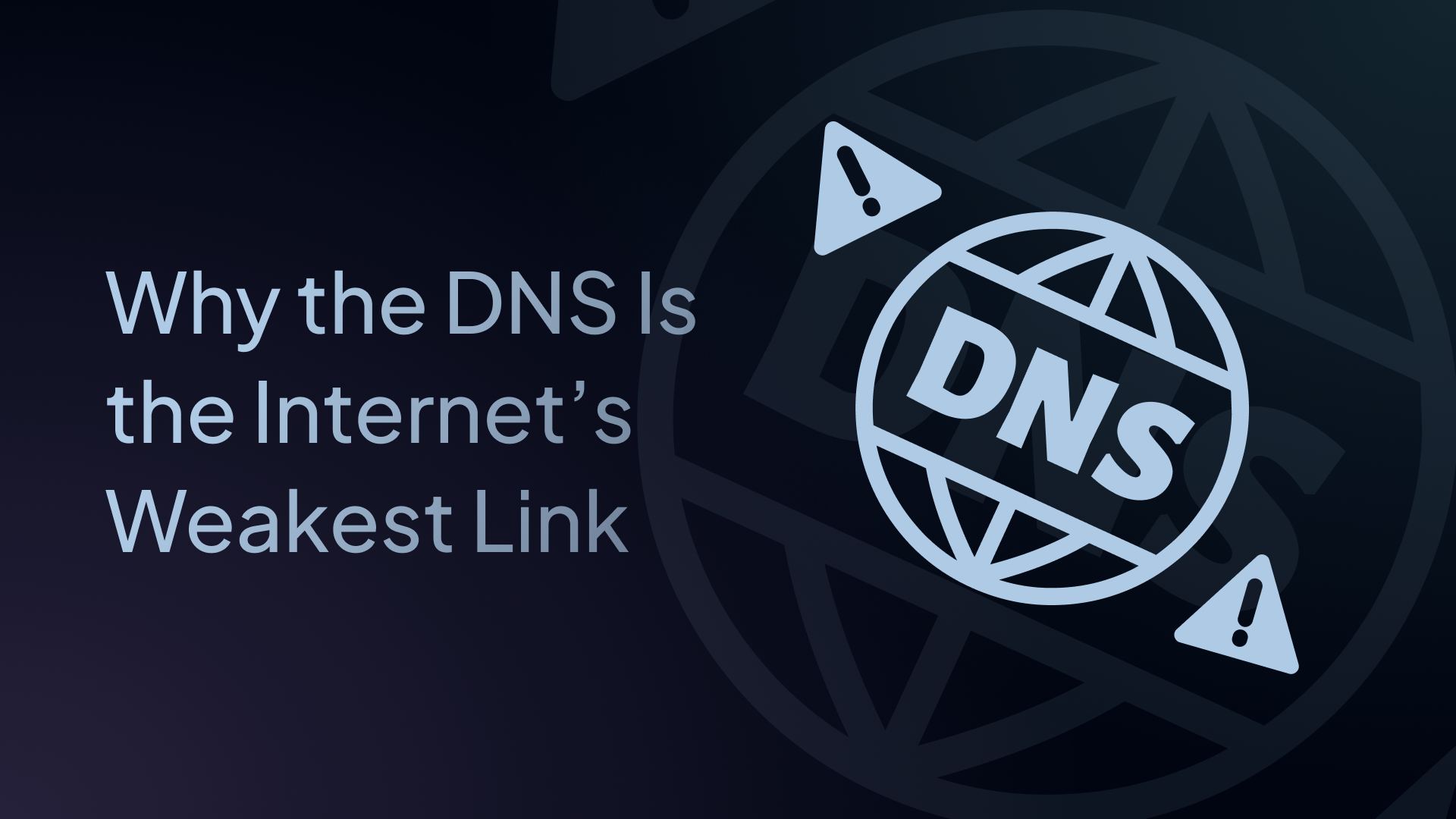Why the DNS Is the Internet’s Weakest Link
Attackers and malicious entities often target DNS. Discover how to fortify this fragile yet critical foundation of the internet.

The internet is only as strong as its weakest link, and that link is often the Domain Name System (DNS). Every time you open a website, send an email, or connect to a service, DNS is working behind the scenes to facilitate it all.
But when you consider that it was built for speed and reliability, not security, it’s easy to see why it’s one of the most attractive targets for attackers.
In this article, we’ll look at why DNS is so vulnerable, common attack methods that exploit it, and what you can do to strengthen this fragile but critical foundation of the internet.
Trust by Design
The Domain Name System was designed in the 1980s. Like many internet technologies, DNS was designed to make network resources easier to access. It does this by mapping human-friendly domain names (like example.com) to numeric IP addresses used by computers to communicate.
However, few considered security during its development, as it wasn’t a primary concern at the time. Even if it had been, the creators of the DNS could never have predicted all of the attack strategies that the hackers of the future would invent.
Key Vulnerabilities and Attack Vectors
The easiest way to understand the security weaknesses in the DNS is to examine the basic categories of attack strategies used against it.
A. DNS Spoofing (Cache Poisoning)
DNS spoofing is a technique that tricks a DNS resolver into accepting and caching fraudulent DNS records. For example, they could poison the cache so that when a user tries to go to yourbank.com, the resolver returns the IP address of a fake website controlled by the attacker.
B. Lack of Encryption: Eavesdropping and Manipulation
Two invasive DNS manipulation techniques are prominent:
- DNS Hijacking: This occurs when DNS queries are redirected to a resolver controlled by an attacker. Hijacking can happen through malware that changes device or router DNS settings, or via compromised network infrastructure. Attackers can then block content, inject ads, or conduct phishing attacks.
- Snooping: Traditional DNS queries are sent in plain text. Anyone on the same network path (e.g., a guest Wi-Fi network or ISP) can observe which domains you visit, thereby compromising your privacy and potentially enabling censorship or profiling.
C. DDoS Amplification Attacks
DNS can be manipulated for Distributed Denial-of-Service (DDoS) attacks due to its amplification factor.
In this scenario, an attacker sends a small DNS request to an open DNS resolver but spoofs the source IP address to make it look like it came from the victim's server. The DNS resolver sends a much larger response to the victim’s spoofed IP address, overwhelming their system with amplified traffic.
Because DNS responses can be dozens of times larger than the queries, attackers can generate massive floods with relatively little bandwidth.
D. DNS Tunneling
DNS tunneling is a technique where attackers encode data from other protocols within DNS queries and responses. DNS traffic is almost always allowed through firewalls because it’s required for most internet activity. Attackers can use it to create a covert communication channel to bypass security controls.
E. Domain Hijacking and Registry Vulnerabilities
The security of a domain name itself depends on the registrar's security. If an attacker gets into your registrar account, they can take control of your domain, alter DNS records, and transfer it to a different registrar, effectively taking over your website, email, and other online services.
DNS Strengthening Solutions
The good news is that you don’t have to accept DNS as a permanent weak spot. Several key protections can significantly reduce the risks:
- DNSSEC: Adds cryptographic signatures to DNS data to prevent forged or tampered records.
- Encrypted DNS (DoH/DoT): Protects queries in transit, preventing interception or manipulation.
- DNS Filtering: Blocks access to malicious or unwanted domains before connections are made.
- DNS Monitoring: Provides visibility into suspicious query patterns, helping detect anomalies and potential attacks.
These measures are simply a few of many offered by top DNS security solutions that close many of the gaps attackers rely on, making DNS a defensive asset instead of a liability.
How Control D Makes It Easier
Implementing these protections on your own can be complex, but services like Control D combine them into a simple, user-friendly platform.
With encrypted queries, DNSSEC, built-in malware blocking and web filtering, customizable rules, and privacy-first policies, Control D helps you secure DNS traffic without overhauling your entire security stack.

